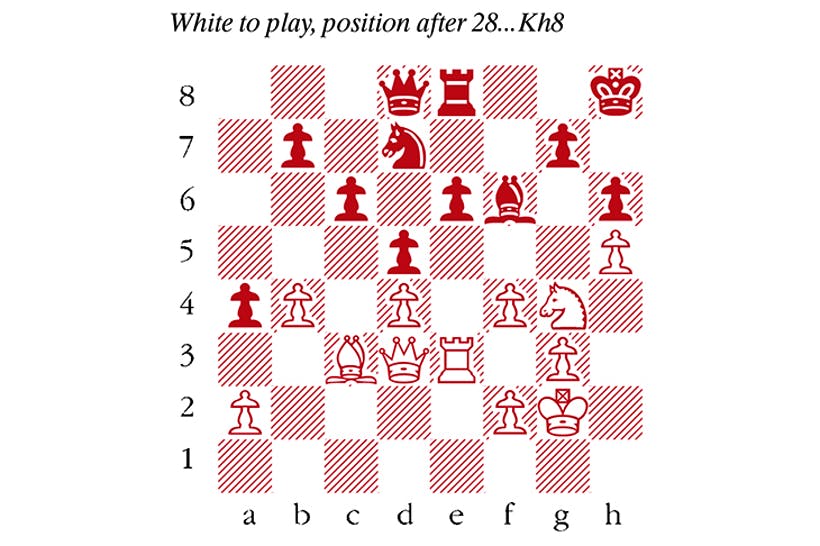Looking at the first 12 games of the 2018 Carlsen-Caruana World Championship, which all ended in draws, I saw a statistical blip where others saw an ossified match format and the death of classical chess. But nobody could decry the drama at this year’s Women’s World Championship, in which reigning champion Ju Wenjun from China saw off a fierce challenge from 21-year-old Russian Aleksandra Goryachkina.
The early games saw Goryachkina willing to engage in protracted battles, but it was Ju who got the first win from a tricky queen ending in the fourth game. Undeterred, Goryachkina struck back immediately, and went on to take the lead herself in the eighth game. Ju was rewarded for several bold decisions in the ninth, leaving the scores level. In the next, Goryachkina was back to pursuing a small advantage, but her relative inexperience seemed to play a part when she overstepped the mark and stumbled into a lost position.
The penultimate game was drawn, which left Goryachkina needing a win to catch up in the 12th. Her offbeat opening (1 d4 d5 2 Nc3 Nf6 3 Bf4 e6 4 Nb5!?) was perfectly judged to unsettle the champion, and she followed up with determined play to tie the match 6-6. So Goryachkina entered the set of four rapid tiebreak games with momentum on her side, though Ju also had reason to remain confident: she has won the Women’s World Rapid Championship on the last two occasions that she played.
In the first tiebreak game, Goryachkina built up a huge edge with purposeful manoeuvres, but Ju somehow scrambled a draw, and waited for her chance. It came in the third game, shown here, where the sprightly 10 exf3!? was far more inspiring than the bishop recapture she had tried two games earlier. Black struggled to find a plan in the middlegame, and was steadily outplayed. In the final game, the challenger needed another win ‘on demand’. But a stubborn defensive game from Ju sufficed to secure victory in this gripping match, the day before the start of the Chinese New Year. (See diagram)
Ju Wenjun–Aleksandra Goryachkina
Third tiebreak game, January 2020
1 Nf3 d5 2 g3 c6 3 Bg2 Bg4 4 O-O Nd7 5 h3 Bh5 6 d4 e6 7 c4 Be7 8 cxd5 exd5 9 Nc3 Bxf3 10 exf3 Voluntarily doubling the pawns, as the extra kingside pawn will later prove useful. For now, Black’s knights are denied a natural focal point on e4. 10… Ngf6 11 h4 O-O 12 Bh3 Nb6 13 Qd3 Re8 14 b3 Nfd7 15 Re1 Bf6 16 Bd2 a5 17 Kg2 Nf8 18 Rxe8 Qxe8 19 Re1 Qd8 20 Nd1! This knight has a bright future on the kingside. 20… Nbd7 21 Ne3 Qb6 22 Bc3 a4 23 b4 Ne6 A committal decision, but it’s hard to suggest other moves. Ne3-g4-e5 would be a natural development of White’s attack. 24 Bxe6 fxe6 25 Ng4 Re8 26 f4 Qd8 27 h5 h6 28 Re3 Kh8 (see diagram) 29 b5! Ju has a large advantage, so she makes inroads on the queenside and increases the scope of her bishop. 29… Nb8 30 Qe2 cxb5 31 Qxb5 Qc8 32 Qxa4 Nc6 33 Bb2 Re7 34 Qc2 Qe8 35 Nxf6 gxf6 36 Ba3 Rg7 37 f5 A tactical strike, as 37… Nxd4 38 Qd3 Nxf5 39 Qxf5! wins a piece. 37… e5 38 dxe5 fxe5 39 f6 Rg5 40 f4 Rxh5 41 fxe5 More accurate was 41 g4 Rh4 42.Qf5! preparing f6-f7. 41… Qe6 42 Kg1 d4 42… Rf5! offered some hope. 43 Qg6! Qd7 44 e6 Qc7 45 Qxh5 Black resigns






Comments